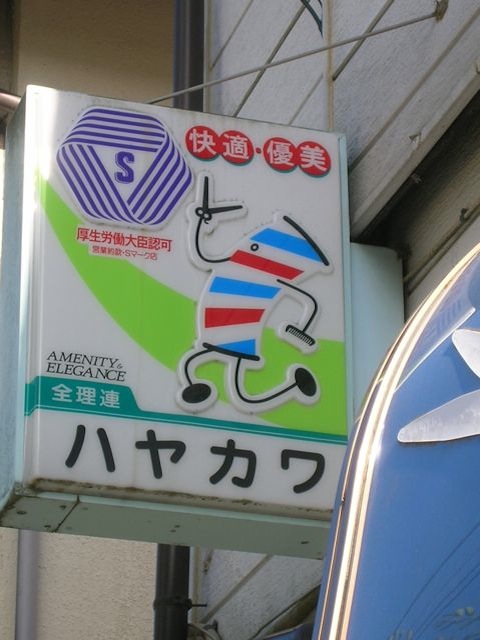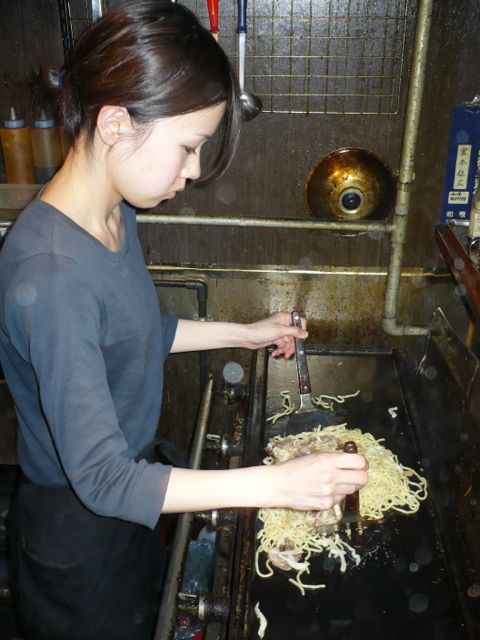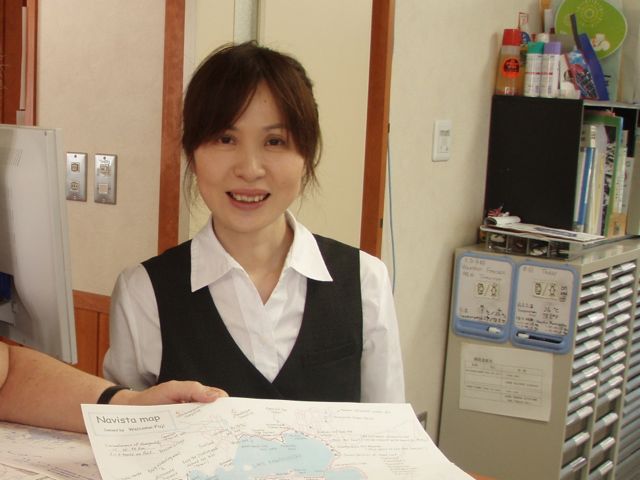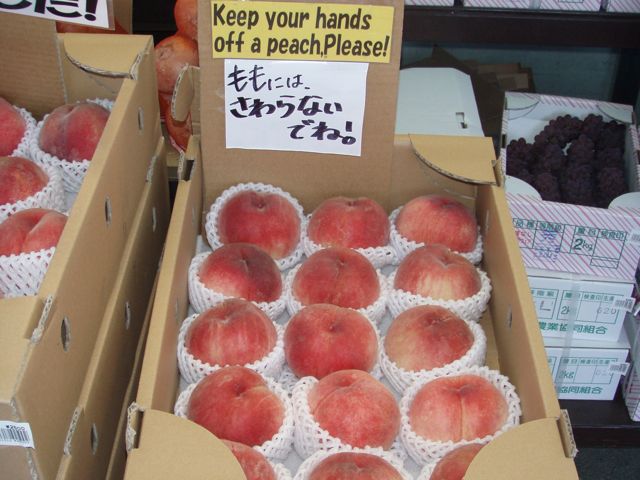Traveling Japan Without Knowing the Language
While you are better knowing some language, bilingual signage and announcement, plus gracious Japanese people help you get along. Here are some tips.
by Nancy Kerstetter
One quandary for international tourists in Japan is the language barrier. In many parts of Japan — mostly in the large cities — you have no trouble communicating by combining English with polite hand gestures. In addition, bilingual signage and gracious Japanese people go a long way toward making your visit silky smooth. Despite this, whenever you venture out — and you should — be sure to carry a card with your hotel address and phone number. In small cities and rural areas — where Japanese is the sole language — you can still communicate by putting in a little effort.


Many signs are illustrated to make it clear what they are advertising. This woman cooked the food based on what was pointed to on the menu. No Japanese language needed.
Reading the signage
Major cities such as Tokyo, Hiroshima, Kyoto, Osaka, and Sapporo have bilingual signs. From the train stations to the street signs, from restaurant menus to store displays, you often see English with Japanese wording side-by-side. Even some mid-sized cities, such as Wakayama, have some bilingual signs, but not many.
As you might expect, when you travel away from major international tourist destinations, you notice less and less bilingual signage. For instance, the city of Wakayama in southern Honshu is a substantial size metropolitan area, but the lack of non-Japanese tourists is evident in the signs found at the charming Wakayama Castle. They are mostly in Japanese — but not totally — with some having pictures to illustrate the meanings of the signs.
Even the train stations in Wakayama reflect the lack of non-Japanese visitors, all signage is strictly Japanese, although you can find major thoroughfares because of the bilingual street signs.
Japanese embrace visitors
How do you respond when you encounter international guests in your home country? Do you take time to greet, welcome, and inquire about their visit? You should. That is how Japan treats its international guests.
Near Mt. Fuji, the small resort town of Kawaguchiko draws thousands of Japanese tourists, not many English speakers. While few people speak English, the small tourist information office has English-speaking staff who are happy to help.
The Japanese people are happy to host tourists. You find yourself greeted with words or a smile and slight bow. Do not expect this treatment on the busy streets of Tokyo, but in any shop, restaurant, hotel, bank, post office, museum or commercial business, be ready to return the greeting in kind.
Youngsters and young adults are always ready to practice their English language skills with you. However, as in the United States, adults are more reticent to speak in an alien tongue, but that does not mean they lack English. In many countries adults are hesitant to speak in a foreign language because they fear making a mistake or being misunderstood. If you think they might understand English, speak a phrase slowly and clearly. You will be able to tell if they understand you, or they may shake their head to indicate that they do not. Do not give up, try non-verbal communication.
Communicating non verbally
Communicating without using words should be easy to do universally. Just remember that facial expressions and body language convey information, so be positive. Try not to show anger or dismay. Keep a pleasant look on your face, even when frustrated. A smile can break ice or indicate your good will. The Western habit of shaking hands is widely recognized and accepted. But bowing in Japan goes along way, even if you do it poorly.
Although maintaining eye contact in the U.S. is preferable and resonates confidence, in Japan it may be construed as rude or as a challenge. Japanese tend to look at you but a little lower than your eyes. They see this as a sign of respect.
Some Japanese may trust non-verbal messages more than the words spoken. Frowning while someone is speaking is interpreted as a sign of disagreement. Crossing your arms signifies disagreement, dissatisfaction, or sometimes defensiveness.
Personal space in the U.S. and other Western countries is usually much larger than in Japan. Especially in crowded situations, the Japanese avoid eye contact to give themselves and others privacy. People do not touch one another when talking like Americans do. Hugging and touching the shoulder or arm would be invasive to Japanese people, even if you are standing shoulder-to-shoulder on a commuting train.
Shopping and Dining
Making a sale is as important in Japan as anywhere, so you should not have trouble shopping. If all else fails, point to the price sticker to make an inquiry. Often salespeople add your charges and show you the calculator to indicate the total cost of your purchase in yen. You can help yourself in Japan making a yen-to-your-current conversion chart. Despite wide-spread claims in the otherwise, visiting Japan can be very economical.
Be reserved in handling the merchandise, especially in food markets. Shoppers do not pick up fruit and vegetables unless selecting them for their shopping basket.


Some personnel in some tourist offices speak at least small amounts of English and can help with local sightseeing plans. This merchant wants to be sure you understand — don't pinch the peaches!
Many restaurants have pictures on sign boards or the menu to indicate their selections. If not, ask for a English menu or a waitperson who speaks English. If nothing else, you can always indicate you would like to order the same as what the diner at a nearby table is having.
Although Japanese is a difficult language to master, you can learn a few helpful phrases if you like. For instance, memorize simple words to indicate what you would like to drink. Coffee is kohi pronounced koh-hee. Green tea is ocha pronounced oh-cha. Water is mizu pronounced me-sue.
Finding an address
Building and house numbering in Japan is very confusing to Westerners because the numbers do not ascend or descend consecutively on the block. Before the 1950s, numbers were allotted based on date of construction in most parts of Japan. Often you may need to seek assistance. Police boxes are dotted throughout the larger cities. Have the address written down so police personnel can assist you or taxi drivers can access their satellite navigation systems for directions. Address numbering can be confusing system even to local residents, so do not feel uncomfortable asking for help. It may be somewhat easier in Kyoto or Sapporo as they developed on a grid pattern. Many smaller streets do not have names.
Note that addresses in Japanese list the information in this order: prefecture, various districts until getting to the building number. However, addresses in English will be in the reverse order, the order we are accustomed to in the U. S., for instance. In an address, the first number is for a chome (丁目) or main block. The second number indicates a smaller block of buildings within the chome. The last number is the building itself (whether in English or Japanese).
Many businesses put maps on their cards and ads to help visitors and residents alike find their establishments.